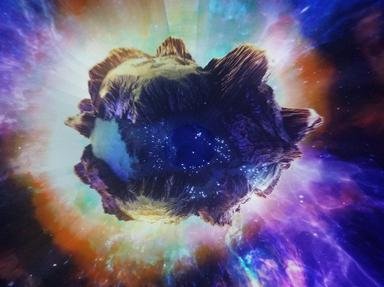Quiz Answer Key and Fun Facts
1. For most of its existence as an ordinary star, a star is stable, with the inward pressure of its gravity balanced by the pressure from its hot interior. During this stage of its life, it is said to inhabit "The Main _____ ".
2. The star maintains its heat by "burning fuel" in its core, ie, fusing atoms of one element into larger atoms of another element and releasing energy. Which element, number 1 on your periodic table, makes up the bulk of the fuel?
3. If the star has enough mass, it will be able to keep burning fuel by continuing the fusion process and converting the atoms in its core to heavier and heavier elements. The process will come to an end, however, when the star reaches a certain element that cannot be converted. Which is this element, that signals the end of the road?
4. When the star is no longer able to burn fuel, it will collapse down to a "stellar remnant", much smaller than its original size. Before collapsing, however, the star will first grow bigger. True or false?
5. The fate of the star after it collapses depends on a very specific number. If, after collapsing, the "stellar remnant" has less than 1.4 times the mass of our sun, its future will be very different from a star with a stellar remnant of more than 1.4 solar masses. What name do astrophysicists give to this cut-off point of 1.4 solar masses?
6. When a star collapses to a stellar remnant with LESS than the magic number of 1.4 solar masses, what type of object will it become?
7. Stars with very high mass go through one last spectacular phase before they collapse - a cataclysmic explosion. What word do astrophysicists use to describe an exploding star?
8. When a star collapses to a stellar remnant with BETWEEN 1.4 solar masses and 3 solar masses, what type of object will it become?
9. When a star collapses to a stellar remnant with MORE than 3 solar masses, what type of object will it become?
10. What do astrophysicists mean when they talk about Population I stars and Population II stars?
Source: Author
Finduskeepus
This quiz was reviewed by FunTrivia editor
gtho4 before going online.
Any errors found in FunTrivia content are routinely corrected through our feedback system.

